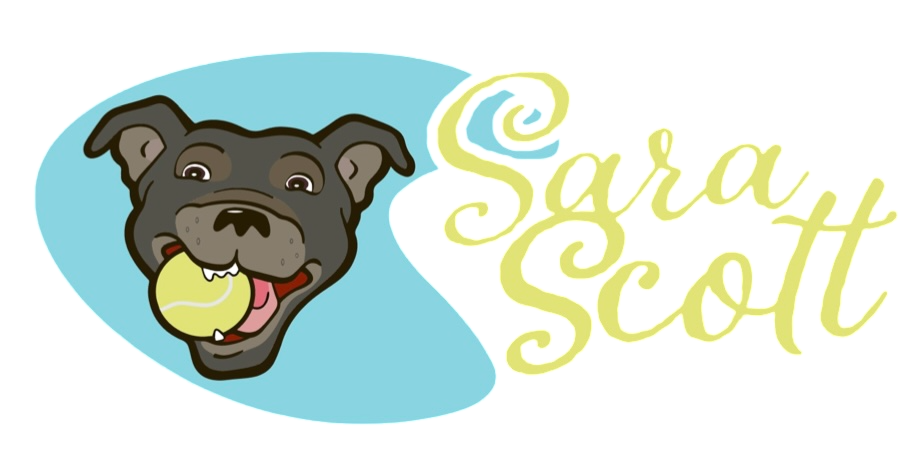Is Your Dog's Growling Putting You On Edge? The Surprising Truth About Resource Guarding
- Sara Scott
- Jun 11, 2024
- 4 min read
When a client's dog started growling every time someone walked by his food bowl, they knew they had a problem. Resource guarding, as they soon learned, is a common but often misunderstood behavior in dogs. It's a natural canine instinct to protect what they value—be it food, toys, space, or even people. But when it creates unsafe situations, it's time to take action.
What is Resource Guarding?
Imagine this: You're settling in for a cozy evening on the couch, when suddenly Fido lets out a low, menacing growl. His body stiffens, his eyes narrow. He's guarding his favorite spot, and he's not about to share. That's resource guarding in a nutshell.
Resource guarding is a label used to describe a set of behaviors similar to the scenario described above. If manifests in various forms, ranging from a dog keeping watch over their food bowl to growling when someone approaches their resting spot. This behavior is rooted in a dog’s instinct to protect valuable resources. While it’s a normal aspect of canine behavior, it can become problematic if it creates unsafe situations for dogs or people.
What Do Dogs Typically Guard?
In my years as a dog trainer and behavior specialist, I've seen dogs guard just about anything they find valuable. This could be their regular dog food, special treats, or high-value chews, as well as areas associated with these items like the food bowl or a specific spot in the house. They might also guard toys, random objects like sticks and pinecones, and even spaces such as couches, rooms, or thresholds.
Understanding the Roots of the Behavior
Resource guarding doesn't happen in a vacuum. It's influenced by a complex interplay of factors:
Genetics
Breed characteristics
Learned behaviors
Past experiences
Negative training history
Some dogs may guard from a distance, while others may exhibit more direct guarding behaviors, such as growling or snapping while in direct possession of the item. Understanding the nuances of a dog's behavior is key to addressing it effectively.
When Guarding Becomes a Problem
Resource guarding can be a real headache for dog owners. But it doesn't have to be. While it's a natural behavior, it becomes an issue when it escalates to unsafe behavior. If a dog's guarding intensifies or involves aggression towards humans or other animals, it's crucial to seek professional help from a qualified behavior specialist.
Tailoring Your Approach
Addressing resource guarding isn't one-size-fits-all. For instance, a dog guarding due to fear likely will need a different approach than one whose behavior is a normal breed characteristic. As a trainer, I always stress the importance of tailoring training and management strategies to a dog's individual needs while looking through an evidence-based lense.
For dogs with strong guarding instincts, particularly guardian breeds, understanding and managing their behavior is essential. This may involve creating environments that minimize opportunities for guarding and teaching them how to cope with potential triggers.

Practical Tips for Managing Resource Guarding
The Art of Trading: If an owner needs to take something away from their dog, they should offer a higher-value item in exchange. This avoids confrontations and negative associations.
Environmental Management: Owners should arrange their home to limit their dog's access to items they tend to guard. Using baby gates or secure trash cans can prevent access to guarded items.
Teaching Essential Cues: Incorporate cues like ‘drop it’ into your training. Work on these cues in non-confrontational settings to build up positive associations and reliability.
Mealtime Management: For households with multiple dogs, feed them separately to prevent food guarding issues. Allow your dog to eat in peace without interference.
Reading Body Language: Owners must learn to read their dog's body language. Signs like 'whale eye', growling, or avoidance indicate discomfort and the need for space.
Seeking Professional Help: For complex cases, especially those involving aggressive behavior, consulting a professional dog trainer or behaviorist is critical. We can provide a tailored approach based on a thorough assessment of the dog's behavior.
Building a Better Relationship
Remember, resource guarding is a natural behavior, not a character flaw. With the right knowledge and approach, owners and their dogs can navigate this challenge together. Understanding the behavior and addressing it appropriately is key to a healthy, harmonious relationship between dogs and their human companions.
As a dog trainer and behavior specialist, my role is to equip owners with the tools and understanding they need to build that beautiful relationship they deserve with their dogs. By proactively teaching dogs how to handle coveted resources and recognizing when to seek professional help, we can ensure a safe and happy environment for everyone involved in a dog's life.
Unlock the Secrets to a Well-Behaved Dog: Sign Up for My Free Newsletter!
Are you tired of dealing with your dog's challenging behaviors? Do you want to build a stronger, more harmonious relationship with your pup? Look no further! As a seasoned dog trainer and behavior specialist, I'm excited to invite you to sign up for my free newsletter. Packed with invaluable insights, proven training techniques, and practical tips, this newsletter is your key to unlocking your dog's full potential.
By subscribing, you'll gain access to a wealth of knowledge that I've accumulated over the 25+ years of working with countless dogs and their owners. From tackling common issues like resource guarding and leash reactivity to fostering positive behaviors and building trust, each newsletter is designed to empower you with the tools and understanding you need to create a thriving relationship with your dog. Best of all, this advice is absolutely free – no strings attached.
My goal is to help you and your dog navigate the journey of companionship together, every step of the way. So what are you waiting for? Click the link below to sign up now and start receiving your free training tips and advice today!
🐾 SIGN UP 🐾

Comments